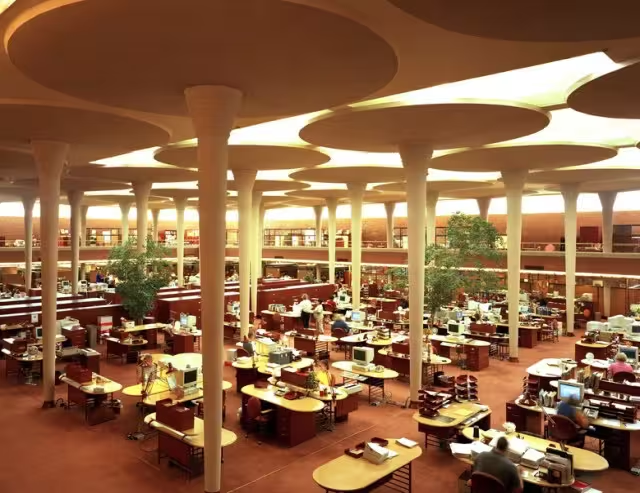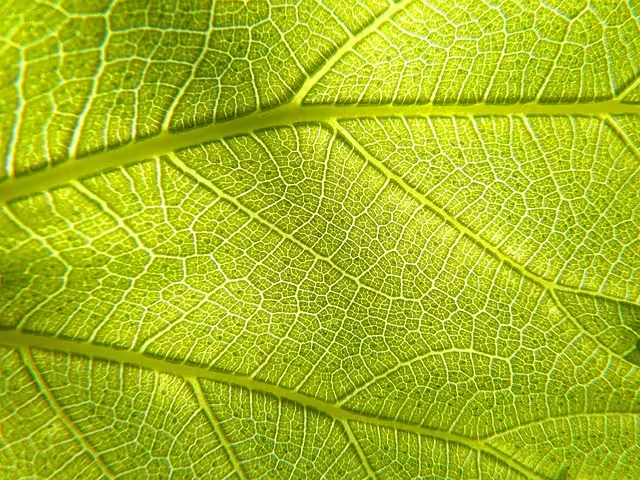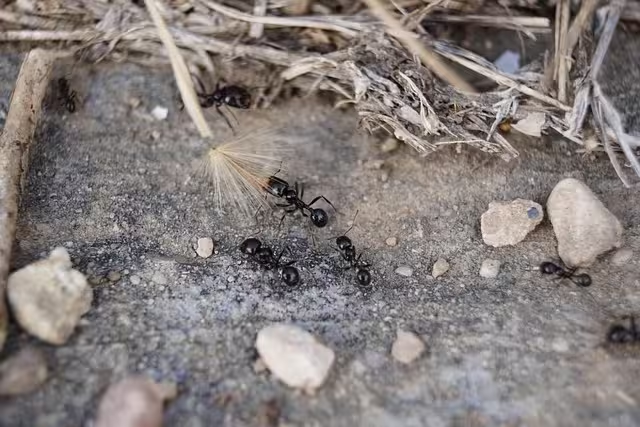Imagine trying to solve a problem with 3.8 billion years of research and development behind you. Every challenge has been met, every inefficiency has been refined, and every solution has been tested by the most rigorous force possible: survival. This is the incredible library of genius that nature offers us. For web designers, developers, and strategists, the practice of biomimicry is the key to unlocking this library. Biomimicry is the science and art of looking to nature’s forms, processes, and entire ecosystems to solve our own complex problems. It moves beyond simple inspiration and into the realm of deep functional analysis.
This article will guide you through the core principles of biomimicry and provide a clear framework for applying them. By learning from nature, we can build websites and digital experiences that are not just more beautiful, but fundamentally more effective, efficient, and resilient.
Table of Contents
Biomimicry vs. Biophilic Design: A Critical Distinction for Web Designers
In the world of nature-inspired design, two terms are often used together: biophilic design and biomimicry. While they both connect us to the natural world, they operate in very different ways. Understanding this difference is the first crucial step toward mastering biomimicry in your work. Many people confuse the two, but their goals and methods are distinct.

Biophilic design is about our love of life and nature. It suggests that humans have an inbuilt need to connect with the natural world. In web design, this often translates to the look and feel of a site. Think of a website for a spa that uses a color palette of soft greens and earthy browns. It might feature high resolution images of serene forests, flowing water, or smooth stones. The textures might feel organic, and the typography could be flowing and natural.
All of these choices are meant to create a feeling of calm and connection to nature, reducing stress and improving the user’s emotional state. Biophilic design asks, “How can we bring the experience of nature into our design?” It’s about feeling.
Biomimicry, on the other hand, is about function. It is a much deeper and more technical discipline. Instead of just using images of nature, biomimicry studies how nature works and applies those principles to solve problems. It asks, “How does nature solve this challenge?”
For example, a web designer using biomimicry might study how a slime mold, a simple organism with no brain, can find the most efficient route through a maze to reach food. They could then use the rules of that slime mold’s behavior to design a website’s navigation system, helping users find the information they need with the fewest possible clicks. The final website might not have a single picture of a tree on it, but its underlying structure would be a work of natural genius. That is the power of biomimicry.
Let’s use an analogy. Imagine you are building a house. A biophilic approach would be to install large windows to let in natural light, place potted plants in every room, and use natural materials like wood and stone. This makes the house feel connected to the outdoors.

A biomimicry approach would be to study a termite mound’s ventilation system, which stays cool in the hot sun without any electricity, and then design the house’s heating and cooling system based on that natural engineering. One approach is about aesthetics and feeling; the other is about performance and function. In web design, we need both, but it is the deep problem solving of biomimicry that offers the next great leap forward in user experience.
The Three Levels of Biomimicry Applied to a Digital Context
The field of biomimicry can be broken down into three distinct levels of application. Each level goes deeper, from mimicking a simple shape to emulating the complex relationships of an entire system. By understanding these levels, you can see the wide range of possibilities that biomimicry offers for web design.
1. Mimicking Form (The “What”)
This is the most direct and often the most visual level of biomimicry. It involves observing a specific shape, pattern, or structure in nature and replicating it in a design. The goal is to borrow the properties that make the natural form successful.
One of the most famous examples of form based biomimicry is the use of the Golden Ratio and the Fibonacci Sequence. The Fibonacci Sequence is a series of numbers where each number is the sum of the two before it (1, 1, 2, 3, 5, 8, 13…). When you visualize these numbers as squares and arrange them, they form a spiral that appears everywhere in nature, from the curl of a seashell to the arrangement of seeds in a sunflower.
This shape, known as the Golden Spiral, is naturally pleasing to the human eye. Web designers use this principle to create balanced and attractive layouts. They might structure a webpage’s content blocks, columns, and images according to these proportions to guide the user’s eye naturally through the page, creating a sense of harmony and order.
Another example of mimicking form is learning from the honeycomb. A bee’s honeycomb is a marvel of engineering. The hexagonal shape is the most efficient way to tile a surface, using the least amount of material to create the most storage space and strength. In web design, this principle can be applied to create modular content grids. Imagine a photo gallery or a product display. By using a hexagonal grid instead of a simple square one, a designer can fit more elements into a smaller space in a visually interesting way. This form of biomimicry is not just about looking good; it is about borrowing nature’s efficiency.
2. Mimicking Process (The “How”)
This next level of biomimicry is where things get truly powerful. Instead of just copying a shape, we are now mimicking a process, an algorithm, or a behavior from nature. This is less about what a website looks like and more about how it works and responds. This is the heart of functional biomimicry.
A fantastic example is applying the principles of natural selection to website optimization. In nature, evolution works through variation and selection. Organisms with traits that help them survive and reproduce pass those traits on, while less successful traits disappear over time. This process creates incredibly well adapted creatures.
In web design, we can use A/B testing in a similar way. A designer might create two versions of a button (a variation), show them to different users, and see which one gets more clicks (selection). The winning design “survives” and is shown to all users. Over time, by constantly testing and selecting the best performing elements, the website “evolves” to become more effective at achieving its goals. This is a direct application of nature’s most powerful creative process. True biomimicry looks at these natural processes for guidance.
Another powerful process to mimic is swarm intelligence, like that of an ant colony. When an ant colony forages for food, individual ants leave a pheromone trail. Other ants are more likely to follow stronger trails. When an ant finds a good food source, it returns to the nest, strengthening the trail. Over time, the most efficient path to the best food source becomes the strongest trail, and the whole colony benefits. This decentralized system is incredibly effective.
We can use this idea, called Ant Colony Optimization, to improve a website’s user experience. We could track the paths users take through a site and see which routes most often lead to a successful outcome, like a purchase or a contact form submission. The website could then dynamically highlight these popular and effective paths, guiding new users to their goals more quickly. This is a clear case of biomimicry solving a complex digital problem.
3. Mimicking Ecosystem (The “System”)
This is the deepest and most complex level of biomimicry. Here, we are not just mimicking a single organism or process, but the principles of an entire ecosystem. Ecosystems in nature, like a forest or a coral reef, are resilient, adaptive, and self regulating. They are masters of recycling resources and creating collaborative systems where everything works together.
Applying this level of biomimicry to a website means thinking of the site not as a static brochure, but as a living digital ecosystem. Consider a forest. A forest has different layers, from the canopy to the forest floor, all working together. It has cycles for water and nutrients, and it supports a diverse range of organisms that have symbiotic relationships, meaning they help each other. A website designed as an ecosystem might have a content strategy where blog posts, videos, product pages, and user reviews are all interconnected. Information is not siloed but flows between different parts of the site. For example, a blog post about a topic could automatically link to relevant products and user testimonials.
Another core principle of ecosystems is diversity leading to resilience. A forest with only one type of tree is vulnerable to a single disease, but a diverse forest can survive such threats. In a digital context, this could mean creating a platform that supports a diverse community of users. An e-commerce site, for instance, could build a system that fosters strong, mutually beneficial relationships between buyers, sellers, reviewers, and content creators. By enabling them to interact and support each other, the platform becomes more valuable and resilient than a simple top down store. This systems level thinking is the ultimate goal of biomimicry, creating digital environments that are as robust and adaptive as nature itself.
Core Principles in Action: Biomimetic Patterns for UI/UX

Now that we understand the levels of biomimicry, let’s look at four core principles from nature that can be directly applied to solve common User Interface (UI) and User Experience (UX) challenges. These practical examples show how the philosophy of biomimicry translates into tangible design solutions.
Principle 1: Optimize for Efficiency (Form Fits Function)
In nature, energy is precious. Nothing is wasted. Every shape, every pattern, every structure has evolved to be as efficient as possible. A bird’s wing is perfectly shaped for flight. A tree’s branches spread out to capture the maximum amount of sunlight. This principle, that form follows function, is a masterclass in efficiency.
- Nature’s Model: The venation of a leaf, the branching pattern of its veins, is a perfect distribution network. It carries water and nutrients from the stem to every single part of the leaf with the most efficient and direct path possible. There are no redundant or dead end veins.
- Web Design Application: We can apply this exact pattern to a website’s information architecture and navigation menu. The homepage is the stem, and the main categories are the primary veins. The subcategories and individual pages are the smaller veins branching off. By designing a sitemap that mimics this efficient branching structure, we ensure that users can find any piece of information on the site with the fewest possible clicks. This minimizes user frustration and cognitive load, creating a smooth and intuitive experience. Before applying this biomimicry principle, a site’s navigation might be a confusing list of links. After, it becomes a logical, hierarchical map that users can understand instantly.
Principle 2: Adapt to Changing Conditions
The natural world is in a constant state of change. Day turns to night, seasons shift, and environments are unpredictable. Organisms that survive and thrive are those that can adapt. A plant turns its leaves toward the sun, and an arctic fox changes its coat from brown to white to match the snow.
- Nature’s Model: A chameleon is the ultimate master of adaptation. It doesn’t just have one fixed appearance. It assesses its environment, including the light, the background, and even its mood, and changes its skin color to match. It responds to its context in real time.
- Web Design Application: This principle is the next step beyond basic responsive design. Responsive design adapts a site’s layout to the size of the screen. Adaptive design, inspired by biomimicry, goes further. Imagine a website that changes not just its layout, but its content and functionality based on the user’s context. For example, a restaurant’s website could show the lunch menu during the day and the dinner menu in the evening. It could detect if a user is on a slow mobile connection and automatically serve a lighter, faster loading version of the site. It could even personalize the content based on a user’s past behavior, showing them information that is most relevant to their interests. This is true biomimicry, creating a digital experience that adapts to the user, not the other way around.
Principle 3: Use Feedback Loops
Nature runs on feedback. A feedback loop is a process where the output of an action is fed back into the system to influence the next action. It is how living things maintain balance and learn. When you get too hot, your body gets a signal (feedback) and you start to sweat to cool down. This process of maintaining balance is called homeostasis.
- Nature’s Model: When you touch a hot surface, your nerves send an immediate signal to your brain, and your brain instantly tells your muscles to pull your hand away. This is a rapid, clear, and life saving feedback loop. The feedback (pain and heat) is impossible to ignore and directly causes a corrective action.
- Web Design Application: Websites can feel frustrating and confusing when they don’t provide clear feedback. Applying biomimicry means building feedback loops into every interaction. When a user fills out a form, each field should provide real time validation, showing a green checkmark for correct information and a clear red message for errors, right away. Don’t wait until they click “submit” to tell them they made a mistake on the first line. When a user uploads a file, a progress bar provides constant feedback on how the process is going. These small loops of information make the user feel in control and confident. They reduce errors and make the experience feel like a responsive conversation rather than a one way command. Good biomimicry means designing for this constant, clear communication.
Principle 4: Leverage Decentralized & Distributed Networks
Many people think of nature as having a top down command structure, like a lion being the “king of the jungle.” But in reality, the most resilient natural systems are decentralized. They do not have a single point of control or failure.
- Nature’s Model: A forest’s mycelial network, the underground web of fungal threads that connects the roots of different trees, is a perfect example of a decentralized network. This “wood wide web” allows trees to share nutrients, water, and even warning signals about insect attacks. There is no central hub. If one part of the network is damaged, information and resources can simply be rerouted. This makes the entire forest incredibly resilient.
- Web Design Application: Many websites are designed with a rigid, linear funnel. Users are expected to start on the homepage, go to a category page, then a product page, and then checkout. This is a centralized model. A website based on the principles of biomimicry would be decentralized. It would have multiple entry points and pathways. A user might discover a blog post from a search engine, which links to a product, which has user reviews that link to other related products. The user can navigate this web of information in a way that feels natural to them, rather than being forced down a single path. This approach not only makes the site more resilient to changing user behaviors but also encourages exploration and discovery, creating a richer user experience. The practice of biomimicry teaches us to build webs, not just straight lines.
The Future is Biomimetic: Generative Design and Evolutionary Algorithms
Looking ahead, the connection between technology and biomimicry is only getting stronger. The most exciting frontier is in the field of generative design, which uses artificial intelligence and the power of evolutionary algorithms to create new design solutions. This is where we stop just copying nature and start collaborating with its creative process on a massive scale.
Generative design works much like natural selection, but at hyper speed. A designer does not create a single final design. Instead, they input a set of goals and constraints into a computer program. For a website’s landing page, the goals might be “maximize the click through rate” and “minimize load time.” The constraints could be “must use the company’s color palette” and “must include our logo.”
The AI then generates thousands, or even millions, of design variations. It randomly tries different layouts, button sizes, headlines, and images. It then tests these designs against the goals. The designs that perform best are “selected” and “bred” together, combining their successful elements to create a new generation of designs. The ones that perform poorly “die off.” This process repeats over many generations, and just like in nature, the designs rapidly evolve to become highly optimized for their specific purpose.
This powerful method is a direct application of biomimicry. We are using the very process that created the eagle’s eye and the shark’s skin to design a better user experience. The role of the human designer in this process is not to be replaced, but to be elevated. The designer becomes a sort of digital ecologist. They are responsible for setting up the environment, defining the goals for success (the “selective pressures”), and curating the best outcomes from the evolutionary process. They guide the creative journey instead of manually crafting every single step.
This is the future that the principles of biomimicry are leading us toward. We are moving from a world where we simply copy nature’s forms to one where we can harness its creative engine. By combining human ingenuity with nature’s time tested algorithms, we will be able to solve design challenges that were once thought impossible, creating digital experiences that are not just smart, but truly wise.
Conclusion: Designing as Nature Does
Throughout this exploration, we have seen that biomimicry is far more than a superficial design trend. It is a profound shift in mindset. It requires us to move from being just creators to being students of a 3.8 billion year old master. We started by drawing a clear line between the aesthetic focus of biophilic design and the functional problem solving of biomimicry. We then explored the three levels of application, from mimicking a simple form like the Golden Spiral, to a complex process like natural selection, and finally to the system wide principles of a resilient ecosystem.
The core patterns of efficiency, adaptation, feedback, and decentralization provide a practical toolkit for any web designer looking to solve real world UI and UX problems. The future of generative design shows just how deep this partnership with nature can become.
Ultimately, the greatest lesson of biomimicry is humility. It is the recognition that the world around us is filled with brilliant solutions just waiting to be discovered. The goal is not to make our websites look like nature, but to make them work like nature: efficiently, adaptively, and resiliently. As you approach your next project, ask yourself not just “What can I create?” but also, “What can I learn from the natural world?” That is where true innovation begins.
